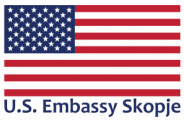Very often some of the questions and dilemmas that arise are partially overshadowed by the answer or solution to them. The problem with fake news is very complex, multi-layered and as such difficult to even define. Its solution requires a holistic approach. Probably the first step in tackling it is to raise awareness of its existence and impact, especially as in many countries over the past few years the political process and social cohesion have been substantially endangered by fake news, and citizens are still not immune to the dangers and consequences of this aspect.
False news most often come from (1) fake news websites – with completely false stories; (2) Web pages that present comments as facts or selectively and partially use one fact and ignore other unwanted facts; and (3) websites that mix facts and fiction, they sometimes publish some true stories and often publish other false stories.
Professional journalism organizations have been developing professional norms and standards for over 200 years, first for print media and then for broadcasting, which now has been converted into digital networking and mobile platforms. Journalistic standards are widely agreed and accepted. They are about collecting, preparing and disseminating news about real events as well as commenting on them. Journalists are aware of their role and power just as they are aware of the consequences of their actions.
The media should act within the professional ethics of journalism and the basic criterion of moral action must be human dignity. On the other hand, in his work the journalist is obliged to follow ethical principles such as truth, objectivity, freedom and responsibility. These principles are also fundamental in the Macedonian Code of Journalists, according to which journalists have a role to impart information, ideas and opinions and have the right to comment. Adhering to ethical values and professional standards in the transmission of information, journalists will be honest, objective and accurate.
Unfortunately, the creators of fake news, unlike professionals, do not adhere to any standards or rules, they do not research, give no arguments and easily produce fake news. These “media” do not work on the principles of journalism.
False news will not only deceive us but undermine our trust in legitimate news sources. Although it exists, it is difficult in practice to prove the correlation between certain false news and its consequences. And the consequences can be serious. Because of this many organizations and groups have tried to stop the fake news in various ways.
False news is “killing people’s minds”, said Tim Cook, head of Apple, on one occasion. The tech boss also said that companies such as his should create tools that help prevent the spread of falsehoods without jeopardizing freedom of speech. It further urged governments to actively campaign for awareness and disclosure of false news. Some of the governments as well as the heads of the European Union have requested to take serious steps in this direction.
Some governments have initiated legislative changes and some have gone a step further in combating fake news, such as the Czech government announcing the establishment of a Center for Counter-Terrorism and Hybrid Threats where, among other things, they treat foreign attacks with misinformation as serious threats for internal security.
In this fight, it is essential that journalistic organizations should focus even more on producing high quality, independent news that readers and the general public can trust. In the fight against fake news, fact-finding initiatives are most common, although these initiatives have not proved to be a very successful strategy. Others hire editors who also cannot control all information one at a time. Others use algorithms that are of course difficult to work with because reality is not defined and no known pattern is followed. Others use automated source checks to confirm the facts and thereby initiate the news.
In my view, the approach that guarantees misinformation and confusion is to publish “all sides” side by side, sometimes by some media and thus to bring the conflicting facts to the same level and by putting irrelevant and relevant sources of information.
While not all of us are expected to become professionals in the search for the right (dis) information, it is very important for a society to develop a critical attitude towards what is served to us, to understand and appreciate how true journalism works and to prioritize the content of real journalists. In that way we will enjoy the freedom and security provided by well-informed citizenship.
[1] https://www.theguardian.com/technology/2017/feb/11/fake-news-is-killing-peoples-minds-says-apple-boss-tim-cook
[1] Во декември 2016 година, претседателот на Европската комисија, Jean-Claude Juncker, повика на акција против лажни вести (https://www.politico.eu/article/juncker-calls-for-action-on-fake-news); Германија сака да го присили facebook да ги избрише лажните вести (https://www.politico.eu/article/germany-plans-to-force-facebook-delete-fake-news/) или Лажни вести и руско мешање (https://www.theguardian.com/media/2016/dec/02/fake-news-facebook-us-election-around-the-world)
[1] https://www.mvcr.cz/cthh/clanek/centre-against-terrorism-and-hybrid-threats.aspx
[1] Неколку корисни совети како да препознаеш дезинформации – https://f2n2.mk/јазикот-и-дезинформациите-2/?fbclid=IwAR3jDJZjhrRjT_3Z3KjvVmIlZVEd-6UG9wUJEhkZzvG37lH74P1Qlx163E0


